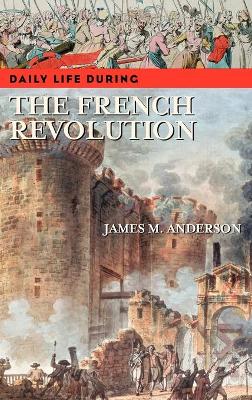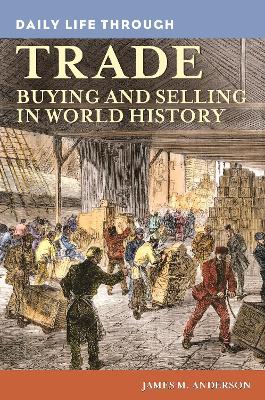Daily Life
4 total works
Trade has long been-and will continue to be-a driving force that shapes our world. This book documents the tremendous importance of trade throughout history and its influence toward peaceful coexistence among nations.
From ancient to modern times, trade has played an integral role in connecting disparate cultures and places on the earth-indeed, the existence of commercial trade across human civilization means that "globalization" is hardly a recent phenomenon or trend. Daily Life through Trade: Buying and Selling in World History documents how the importance of trade has made it the catalyst for migration, exploration, cultural interchange, and unfortunately, conflict and war throughout history.
Author James M. Anderson describes the history of trade and traders' lives, examining how commerce had important consequences in various regions of the world and addressing a wide range of topics, such as fair trade, the World Trade Organization, and the role of trade in sparking world wars. The book's coverage ranges from the earliest times to the present day, and serves not only as an excellent general reference for history students and general readers, but also as valuable supplementary reading for those enrolled in courses in economics and business.
The French Revolution sought to change daily life itself. This book looks at the thirteen years between 1789-1802 that experienced the Terror, banning of the aristocracy, and the rearrangement of the calendar. No part of French life was left untouched during this incredible period of turmoil and warfare, from women's role in the family to men's role in the state. Art and theater were invigorated and harnessed for political purposes. Subtleties in one's dress could mean the difference between life and death. The first modern mass army was created. Chapters include the physical make-up of France; the social and political background of the revolution; the First Republic; religion, church and state; urban life; rural life; family life; the fringe society; clothes and fashion; food and drink; the role of women; military life; education; health and medicine; and writers, artists, musicians and entertainment. Anderson breathes life into the day-to-day lives of those living during the French Revolution.
Greenwood's Daily Life through History series looks at the everyday lives of common people. This book will illuminate the lives of those living during the French Revolution and provide a basis for further research. Black and white photographs, maps, and charts are interspersed throughout the text to assist readers. Reference features include a timeline of historic events, glossaries of terms and names, an annotated bibliography of print and electronic resources suitable for high school and college student research, and an index.
The life of persecuted minorities, as well as that of the wealthy and the ordinary people of Spain during the Spanish Inquisition, comes alive in this illuminating account. For three and a half centuries, the Inquisition permeated every aspect of daily life in early modern Spain. This history depicts in graphic terms the dangers faced by Jews and Muslims and their suffering at the hands of the Inquisitors, as well as the struggle for survival of the lower classes and the ostentatious display of wealth of the high nobility. Set against the political, religious, social, economic, and cultural events of the time, it presents a balanced account, rich in detail, of the daily activities of the Spanish people during this period.
Each chapter offers a succinct perspective of life during early modern Spain, covering the political and social setting, the Church, the Inquisition, Jews and Conversos, Muslims and Moriscos, the court, urban and rural life, family life, clothes and fashions, food, arts and entertainment, military life, education, and health and medicine. All these aspects of life are discussed in the context of a society experiencing profound internal conflicts arising from matters of religion, class, gender, and ethnic prejudice. Interwoven in the text is a discussion of relevant political and economic events that helped to shape the times, as well as comments from both contemporary Spanish writers and foreign visitors who witnessed firsthand the conditions and attitudes of the people. More than 40 illustrations, a timeline of important events, a list of Spanish rulers during the centuries of the Inquisition, a glossary, and a bibliography add value to the narrative.



